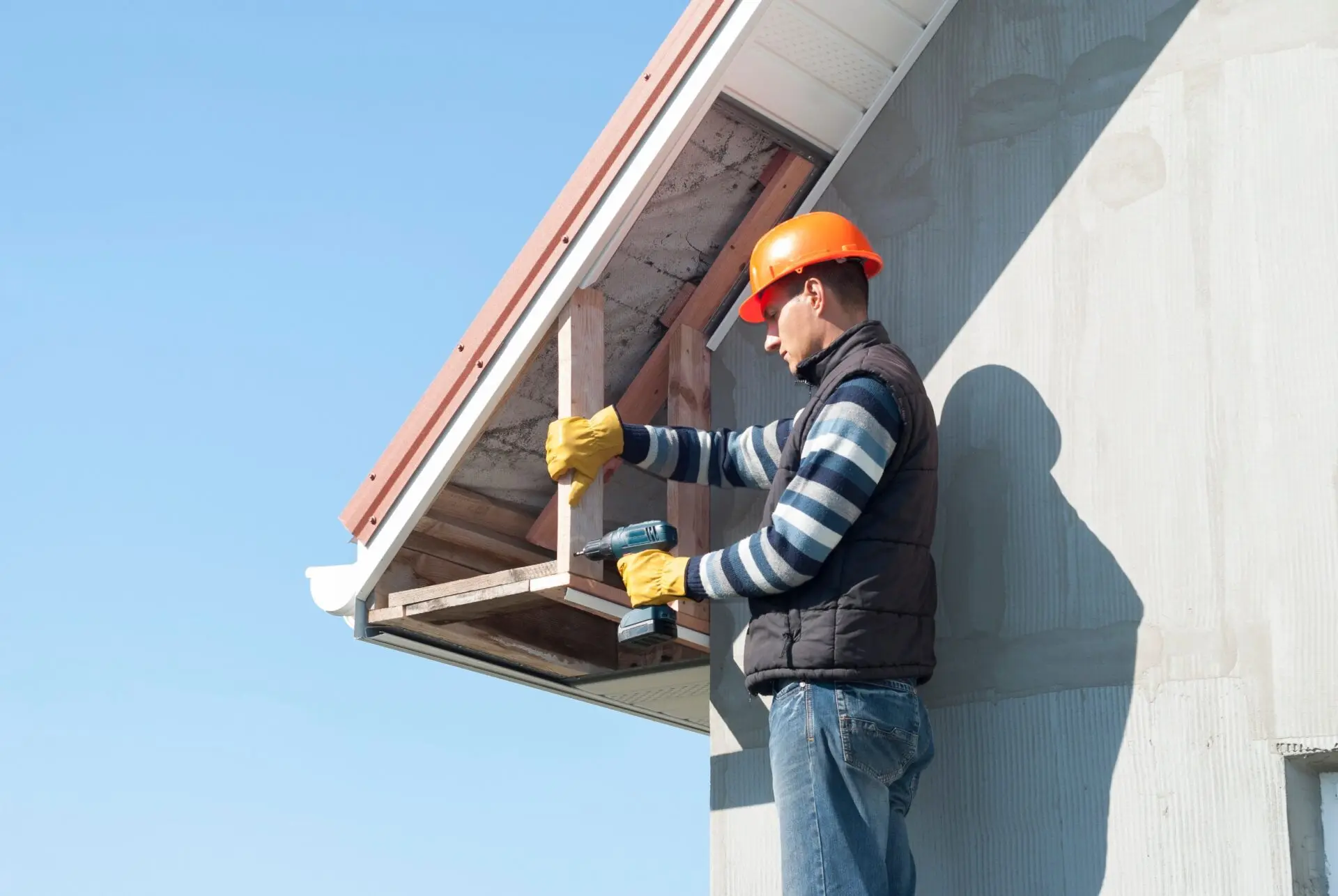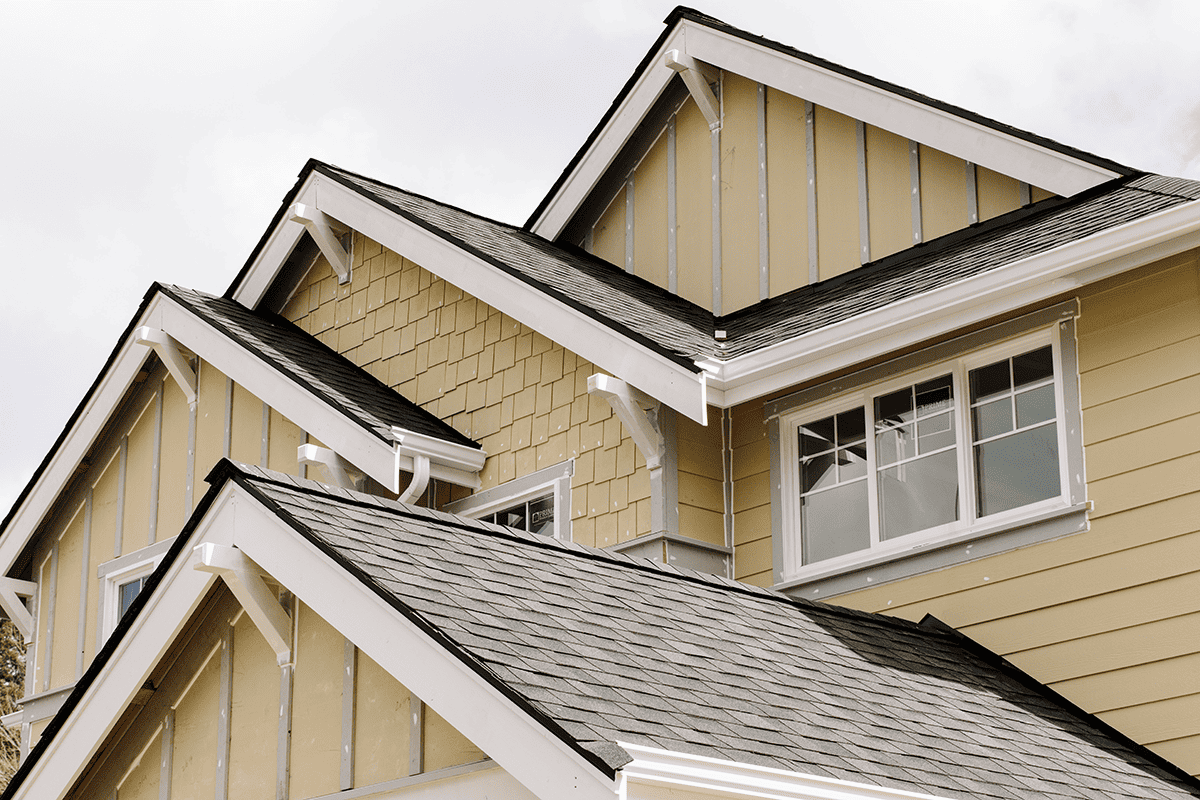12 Dupont St WWaterloo
ON N2L 2X6, Canada
Phone Number
519-729-0880
ON N2L 2X6, Canada
519-729-0880
The fascia board and soffit plays crucial role in protecting your home and roof from the elements, enhancing cur appeal, and providing proper ventilation for your attic. Whether you are replacing old and damaged fascia board and soffit or installing new one, this guide will walk you through the process of installing step by step.

The portion of the roofline that goes along the roof’s edge is called a soffit, and it is crucial to the house’s security. Under your eaves, the soffit provides the last touch. The lower portion of the eave would be open and vulnerable to the weather if there were no soffits.
Fascia and your home’s soffit go hand in hand. The section of siding right above the soffit is called fascia. It’s the bare board that’s visible on the front overhang of your roof. Gutter placement is also done on your fascia. Because fascia is so noticeable, it must be maintained in good condition to maintain the curb appeal of your house.
For more information, you can read everything you need you know about soffit and fascia.
Fascia and soffit are critical components of a roofing system. The fascia board supports the bottom row of roof tiles and holds the gutter system, preventing water damage to the home’s structure. The soffit, usually located beneath the fascia, provides ventilation to the attic, helping regulate temperature and moisture. Together, they protect your roof and walls from weather exposure, pests, and mold—preserving the structural integrity of your home.
Here’s the list of tools and materials that you will need,
Here are the steps that can lead you to install the fascia board and soffit very easily.
Before installing a new fascia board and soffit you need you remove old and existing materials carefully.
We proudly serve homeowners throughout Waterloo, Ontario, offering high-quality fascia and soffit installation services tailored to your home’s needs. Our team brings years of experience and uses industry-approved techniques and materials to ensure both durability and aesthetics. Whether you’re replacing old structures or starting new, we’re here to enhance your roofline with expert craftsmanship.
Our process begins with a thorough inspection to assess your roofline and identify any damage. Next, we remove old materials and prepare the surface for installation. We then install or replace the fascia boards, followed by securely fitting the soffit panels. We finish by sealing joints, checking ventilation, and cleaning up the site—ensuring everything is weatherproof and ready to last for years.
When you choose us, you’re getting more than installation—you’re getting peace of mind. Our team is fully licensed and insured, with years of hands-on experience. We prioritize quality workmanship, transparency, and customer satisfaction. We also offer warranties and detailed consultations to ensure you’re confident in every step of the project.
Pro Home Exteriors provides professional fascia and soffit installation services across Waterloo and the surrounding areas in Southern Ontario. If you’re located in or near Kitchener, Cambridge, Guelph, or the greater Waterloo Region, our team is ready to help. Not sure if we serve your location? Contact us and we’ll gladly let you know how we can assist.

To make sure that the soffit and fascia last long follow these maintenance tips,
The installation time depends on the size of your home and your experience level. For a standard single-story house, it typically takes a day or two to complete.
If you have basic carpentry skills and the right tools, you can install fascia and soffit yourself. However, if you’re unsure or working on a high roof, hiring a professional is recommended for safety and efficiency.
Vinyl and aluminum are popular choices for their durability and low maintenance. Wood offers a traditional look but requires regular upkeep to prevent rot and weather damage.
Fascia board and soffit installation is a simple yet necessary activity that improves the longevity and aesthetics of your house. You may increase curb appeal, enhance ventilation, and safeguard your roof structure by following these procedures and utilizing high-quality materials.
We prefer professional help in installing soffit and fascia board contact Pro Home Exteriors for professional guidance and contract.